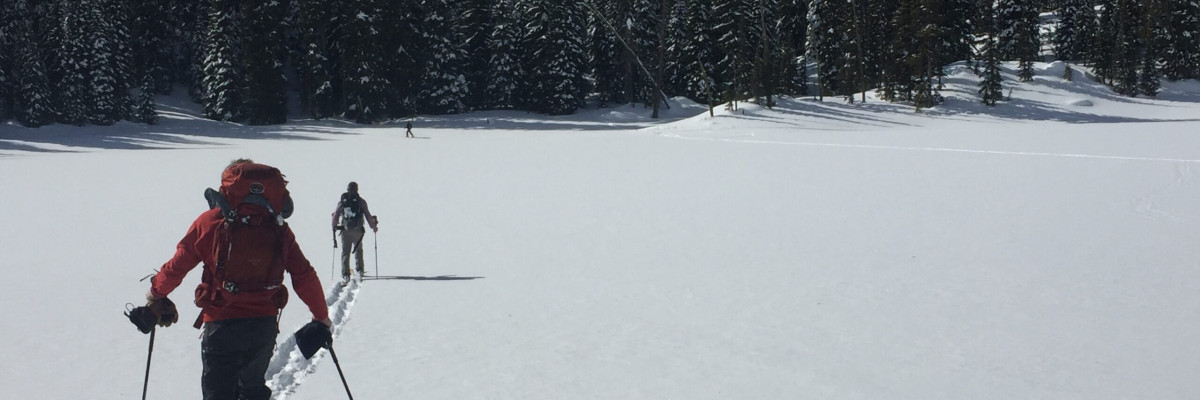The current avalanche danger is LOW in the west central Montana backcountry. Conditions are generally safe but it is possible to find unstable snow in isolated areas particularly on shaded terrain steeper than 35 degrees above 7000 feet. There is always some chance of triggering an avalanche if you recreate or travel on slopes 35 degrees and steeper.
Good morning, this is Travis Craft with the West Central Montana Avalanche Center’s avalanche advisory for February 25, 2016. This danger rating does not apply to operating ski areas, expires at midnight tonight and is the sole responsibility of the U.S. Forest Service.
Weather and Snowpack
Mountain temperatures are 14 F to 24 F. Winds are 18 mph with gusts of 21 mph out of the West. The area has reported a trace amount of snow. The above average temperatures today will again feel like spring in the mountains.
Tim, Steve and I toured in the Rattlesnake yesterday and we found a very well bonded snowpack. The interfaces of old and new snow was not reactive in our snowpack tests. The main avalanche problem’s are loose dry avalanches on shadier aspects and loose wet avalanches on sunnier aspects in the afternoon. These are not very big, but can pose a problem if they knock you off your feet and take you into a terrain trap (tree, cliff, or gully).
The final problem is cornice failure. The cornices grew over the weekend and with the temperatures rising in the afternoon give them a wide berth and do not recreate beneath them.
There are facets in our snowpack, they have not been reactive in our snow pit tests. I would dig a pit and look for these layers to see if they are reactive in my tests on any steep slope I was planning to recreate on.
Weather and Avalanche Outlook
High and dry is the forecast today. The temperatures are supposed to get into the high 30’s today. The next chance for precipitation is for Saturday. A cold front is predicated to move into the area Saturday morning and bring snow with it. The avalanche hazard will remain the same until we have a weather shift.
Ski and ride safe. I will issue the next advisory on Saturday.














